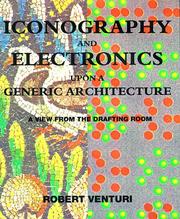| Listing 1 - 6 of 6 |
Sort by
|
Book
ISBN: 026251513X 0262162512 9786612099472 0262281651 1282099477 143564073X 9780262162517 9780262281652 9781435640733 9780262293020 0262293021 9781282099470 661209947X 9780262515139 Year: 2008 Publisher: Cambridge, Mass. MIT Press
Abstract | Keywords | Export | Availability | Bookmark
 Loading...
Loading...Choose an application
- Reference Manager
- EndNote
- RefWorks (Direct export to RefWorks)
A new account of how we perceive the 3D shapes of objects and how to design machines that can see shapes the way we do.
Form perception --- Visual perception --- Perception --- Space Perception --- Visual Perception --- Mental Processes --- Psychological Phenomena and Processes --- Psychiatry and Psychology --- Form Perception --- Social Sciences --- Psychology --- Form perception. --- Visual perception. --- Optics, Psychological --- Vision --- Form discrimination --- Shape discrimination --- Shape perception --- Psychological aspects --- Visual discrimination --- Figure-ground perception --- NEUROSCIENCE/Visual Neuroscience --- COGNITIVE SCIENCES/General

ISBN: 0262220512 0262285355 0585360278 Year: 1996 Publisher: Cambridge : The M.I.T. Press.,
Abstract | Keywords | Export | Availability | Bookmark
 Loading...
Loading...Choose an application
- Reference Manager
- EndNote
- RefWorks (Direct export to RefWorks)
In this book, Shimon Ullman focuses on the processes of high-level vision that deal with the interpretation and use of what is seen in the image. In particular, he examines two major problems. The first, object recognition and classification, involves recognizing objects despite large variations in appearance caused by changes in viewing position, illumination, occlusion, and object shape. The second, visual cognition, involves the extraction of shape properties and spatial relations in the course of performing visual tasks such as object manipulation, planning movements in the environment, or interpreting graphical material such as diagrams, graphs and maps. The book first takes up object recognition and develops a novel approach to the recognition of three-dimensional objects. It then studies a number of related issues in high-level vision, including object classification, scene segmentation, and visual cognition. Using computational considerations discussed throughout the book, along with psychophysical and biological data, the final chapter proposes a model for the general flow of information in the visual cortex. Understanding vision is a key problem in the brain sciences, human cognition, and artificial intelligence. Because of the interdisciplinary nature of the theories developed in this work, High-Level Vision will be of interest to readers in all three of these fields.
architectuurtheorie --- Architecture --- architectural theory --- anno 1900-1999 --- Architecture, Modern --- Philosophy --- Philosophie --- Robert Venturi °1925 (°Philadelphia) --- Architectuurtheorie ; 20ste eeuw ; R. Venturi --- Architectuur ; iconologie ; betekenis --- 72.01 --- Architectuur ; theorie, filosofie, esthetica --- History --- Visual perception. --- NEUROSCIENCE/Visual Neuroscience --- COGNITIVE SCIENCES/General --- 72.07 --- Venturi, Robert 1925-2018 (°Philadelphia, Verenigde Staten) --- Architecten. Stedenbouwkundigen --- Optics, Psychological --- Vision --- Perception --- Visual discrimination --- Psychological aspects --- Form perception. --- Form discrimination --- Shape discrimination --- Shape perception --- Visual perception --- Figure-ground perception
Book
Year: 2021 Publisher: Basel, Switzerland MDPI - Multidisciplinary Digital Publishing Institute
Abstract | Keywords | Export | Availability | Bookmark
 Loading...
Loading...Choose an application
- Reference Manager
- EndNote
- RefWorks (Direct export to RefWorks)
Today in many studies, mental images are still either treated as conscious by definition, or as empirical operations implicit to completing some type of task, such as the measurement of reaction time in mental rotation, an underlying mental image is assumed, but there is no direct determination of whether it is conscious or not. The vividness of mental images is a potentially helpful construct which may be suitable, as it may correspond to consciousness or aspects of the consciousness of images. In this context, a complicating factor seems to be the surprising variety in what is meant by the term vividness or how it is used or theorized. To fill some of the gaps, the goal of the present Special Issue is to create a publication outlet where authors can fully explore through sound research the missing theoretical and empirical links between vividness, consciousness and mental imagery across disciplines, neuroscience, psychology, philosophy, cognitive science, to mention the most obvious ones, as well as transdisciplinary methodological (single, combined, or multiple) approaches.
vividness --- mental imagery --- consciousness --- cognitive neuroscience --- neuroimaging --- cognitive psychology --- behavior --- verbal report --- phenomenology --- perception --- DMN --- TPN --- familiarity --- memory --- amodal completion --- shape perception --- perceptual organization --- depth perception --- visual illusions --- color-gustatory synesthesia --- taste --- taste modulator --- synesthesia --- bibliometrics --- map of science --- term co-occurrence --- contrast polarity --- simplicity principle --- likelihood principle --- simplicity–likelihood equivalence --- Bayes --- classical information theory --- modern information theory --- Bayes’ framework --- visual imagery --- stroke --- posterior cerebral artery --- aphantasia --- prosopagnosia --- visual perception --- n/a --- simplicity-likelihood equivalence --- Bayes' framework

ISBN: 1568983298 Year: 2002 Publisher: New York : Princeton Architectural Press,
Abstract | Keywords | Export | Availability | Bookmark
 Loading...
Loading...Choose an application
- Reference Manager
- EndNote
- RefWorks (Direct export to RefWorks)
As a design primer it includes a series of exercises that lead the reader from the manipulation of simple forms to the creation of complex solutions to difficult design problems. As a commentary on the physical relationships found in design, it teaches the reader essential lessons to better understand three-dimensional design.
Kostellow, Rowena Reed --- Reed Kostellow, Rowena --- 749.01 --- 749.038 --- 749.07 --- Design ; tweedimensionaliteit vs. driedimensionaliteit --- Industrieel design ; 2de h. 20ste eeuw ; Rowena Rees Kostellow --- Industrieel en grafisch design ; vormanalyse --- Rowena Reed Kostellow 1900-1988 (° Kansas City, Missouri, VS) --- 3D --- 770.6 --- ontwerpproces --- productdesign --- visualiseren --- vormgeven --- Meubelkunst en design ; theorie, filosofie, esthetica --- Meubelkunst en design ; 1950 - 2000 --- Meubelontwerpers ; designers ; interieurarchitecten --- productdesign, filosofie, esthetiek en kritiek --- Design --- Form perception --- Volume perception --- Space perception --- Form discrimination --- Shape discrimination --- Shape perception --- Perception --- Visual perception --- Figure-ground perception --- Creation (Literary, artistic, etc.) --- Kostellow, Rowena Reed.
Book
ISBN: 9783540690115 3540690115 3540690123 Year: 2008 Volume: v. 48 Publisher: Berlin ; Heidelberg : Springer,
Abstract | Keywords | Export | Availability | Bookmark
 Loading...
Loading...Choose an application
- Reference Manager
- EndNote
- RefWorks (Direct export to RefWorks)
This book addresses spatial representations and reasoning techniques for mobile robot mapping, providing an analysis of fundamental representations and processes involved. A spatial representation based on shape information is proposed and shape analysis techniques are developed to tackle the correspondence problem in robot mapping. A general mathematical formulation is presented to provide the formal ground for an efficient matching of configurations of objects.
Robots --- Control systems --- Systèmes de commande --- Form perception --- Mechanical Engineering - General --- Mechanical Engineering --- Engineering & Applied Sciences --- Information Technology --- Artificial Intelligence --- Form discrimination --- Shape discrimination --- Shape perception --- Robot control --- Engineering. --- Artificial intelligence. --- System theory. --- Control engineering. --- Robotics. --- Mechatronics. --- Automation. --- Cognitive psychology. --- Robotics and Automation. --- Control, Robotics, Mechatronics. --- Artificial Intelligence (incl. Robotics). --- Systems Theory, Control. --- Cognitive Psychology. --- Psychology, Cognitive --- Cognitive science --- Psychology --- Automatic factories --- Automatic production --- Computer control --- Engineering cybernetics --- Factories --- Industrial engineering --- Mechanization --- Assembly-line methods --- Automatic control --- Automatic machinery --- CAD/CAM systems --- Robotics --- Mechanical engineering --- Microelectronics --- Microelectromechanical systems --- Automation --- Machine theory --- Control engineering --- Control equipment --- Control theory --- Engineering instruments --- Programmable controllers --- Systems, Theory of --- Systems science --- Science --- AI (Artificial intelligence) --- Artificial thinking --- Electronic brains --- Intellectronics --- Intelligence, Artificial --- Intelligent machines --- Machine intelligence --- Thinking, Artificial --- Bionics --- Digital computer simulation --- Electronic data processing --- Logic machines --- Self-organizing systems --- Simulation methods --- Fifth generation computers --- Neural computers --- Construction --- Industrial arts --- Technology --- Philosophy --- Consciousness. --- Artificial Intelligence. --- Apperception --- Mind and body --- Perception --- Spirit --- Self --- Systems theory. --- Control systems.
Book
ISBN: 1441927867 0387888489 9786612126987 1282126989 0387888497 Year: 2009 Publisher: New York, NY : Springer New York : Imprint: Springer,
Abstract | Keywords | Export | Availability | Bookmark
 Loading...
Loading...Choose an application
- Reference Manager
- EndNote
- RefWorks (Direct export to RefWorks)
Dr. Charles Legéndy's Circuits in the Brain: A Model of Shape Processing in the Primary Visual Cortex is published at a time marked by unprecedented advances in experimental brain research which are, however, not matched by similar advances in theoretical insight. For this reason, the timing is ideal for the appearance of Dr. Legéndy's book, which undertakes to derive certain global features of the brain directly from the neurons. Circuits in the Brain, with its "relational firing" model of shape processing, includes a step-by-step development of a set of multi-neuronal networks for transmitting visual relations, using a strategy believed to be equally applicable to many aspects of brain function other than vision. The book contains a number of testable predictions at the neuronal level, some believed to be accessible to the techniques which have recently become available. With its novel approach and concrete references to anatomy and physiology, the monograph promises to open up entirely new avenues of brain research, and will be particularly useful to graduate students, academics, and researchers studying neuroscience and neurobiology. In addition, since Dr. Legéndy's book succeeds in achieving a clean logical presentation without mathematics, and uses a bare minimum of technical terminology, it may also be enjoyed by non-scientists intrigued by the intellectual challenge of the elegant devices applied inside our brain. The book is uniquely self-contained; with more than 120 annotated illustrations it goes into full detail in describing all functional and theoretical concepts on which it builds. About the Author: Dr. Charles Legéndy holds a bachelors' degree in electrical engineering from Princeton and a PhD in physics from Cornell. He wrote his first papers in solid-state physics (helicons), then turned his attention to the theory of data processing in the brain, the subject of the present book. Over the years, in addition, he was involved in a number of projects in experimental brain research (electrophysiology), aerospace engineering, and computers. Dr. Legéndy lives with his wife in New York City.
Form perception. --- Neural circuitry --Mathematical models. --- Visual cortex. --- Form perception --- Visual cortex --- Neural circuitry --- Space Perception --- Models, Biological --- Occipital Lobe --- Perception --- Mental Processes --- Cerebral Cortex --- Models, Theoretical --- Psychological Phenomena and Processes --- Cerebrum --- Investigative Techniques --- Analytical, Diagnostic and Therapeutic Techniques and Equipment --- Psychiatry and Psychology --- Telencephalon --- Prosencephalon --- Brain --- Central Nervous System --- Nervous System --- Anatomy --- Models, Neurological --- Form Perception --- Visual Cortex --- Visual Perception --- Medicine --- Human Anatomy & Physiology --- Health & Biological Sciences --- Neurology --- Neuroscience --- Mathematical models --- Mathematical models. --- Circuitry, Neural --- Circuits, Neural --- Nerve net --- Nerve network --- Neural circuits --- Neurocircuitry --- Neuronal circuitry --- Area striata --- Striate area --- Striate cortex --- Form discrimination --- Shape discrimination --- Shape perception --- Medicine. --- History. --- Neurosciences. --- Philosophy. --- Neurobiology. --- Physics. --- Biomedicine. --- Philosophy, general. --- History of Science. --- Theoretical, Mathematical and Computational Physics. --- Electrophysiology --- Nervous system --- Neural networks (Neurobiology) --- Reflexes --- Occipital lobes --- Visual perception --- Figure-ground perception --- Philosophy (General). --- Neurosciences --- Annals --- Auxiliary sciences of history --- Neural sciences --- Neurological sciences --- Medical sciences --- Mathematical physics. --- Physical mathematics --- Physics --- Mental philosophy --- Humanities --- Mathematics
| Listing 1 - 6 of 6 |
Sort by
|

 Search
Search Feedback
Feedback About
About Help
Help News
News